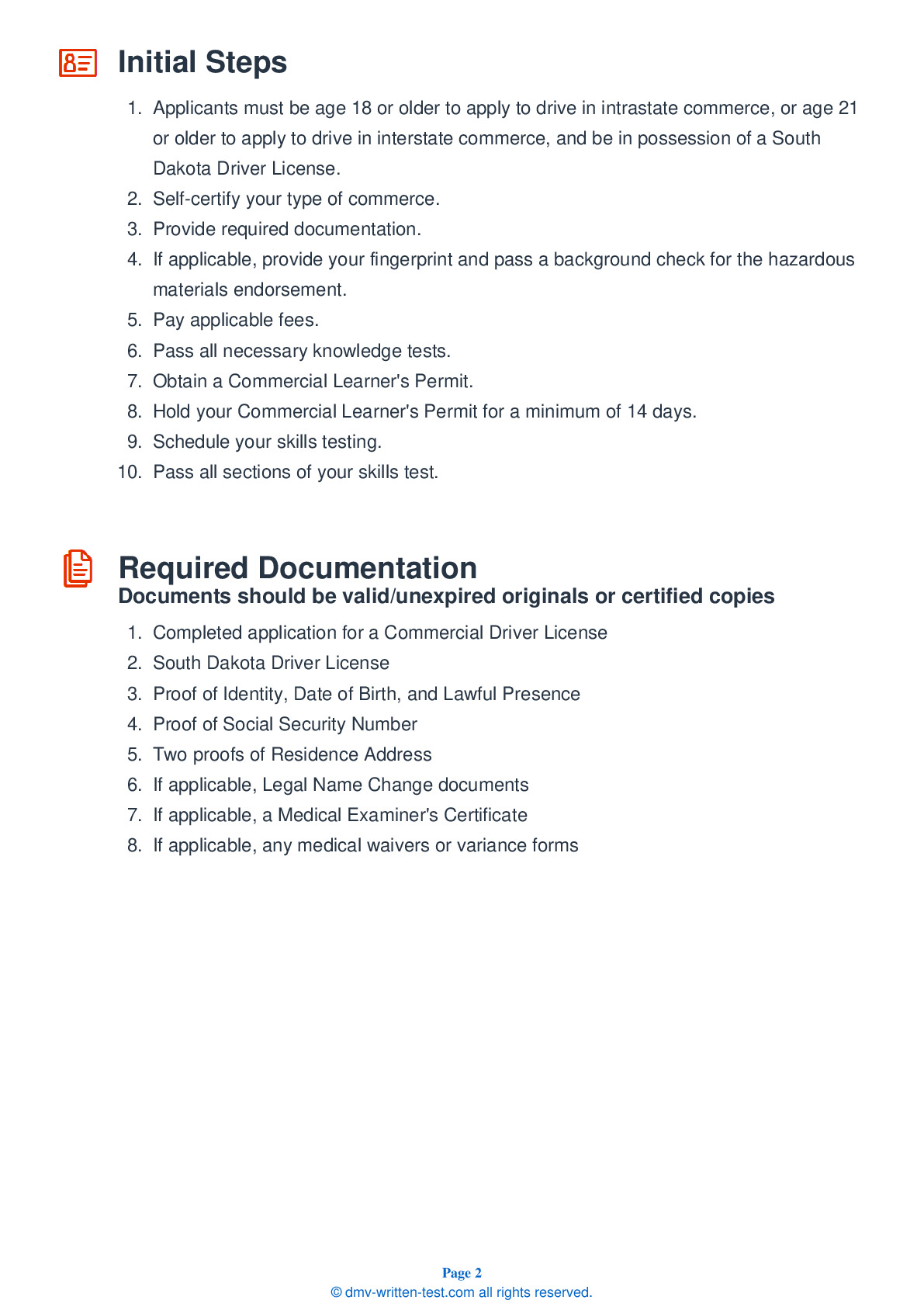Air Brakes
This endorsement is required for driving a vehicle with air brakes. To receive this endorsement, applicants must pass a written test. The test consists of 25 multiple choice questions. Each question has three or four answer choices. To pass, the applicant must answer at least 20 questions correctly. Test questions come from the South Dakota Commercial Driver License Manual. Questions come from the chapter covering: Air Brakes. The Air Brakes endorsement may be used with the Class A, B or C CDL.
Number of Question
Passing Score
7. Foundation brakes are used:
Explanation
Foundation brakes are used on each wheel of a CMV. The most common type of foundation brake is the s-cam drum brake.
8. If your tractor is equipped with ABS but your trailer is not, the ABS:
Explanation
In a tractor-trailer combination, if the tractor is equipped with an Anti-Lock Braking System (ABS) but the trailer is not, the ABS will still improve the driver's steering control. The driver should keep an eye on the trailer and let up on the brakes if the trailer begins to swing out.
9. If using air tanks with manually operated drains, how often should you drain the tanks?
Explanation
In an air brake system with manually operated drains, the tanks should be drained at the end of each day of driving.
10. An air compressor governor controls:
Explanation
In an air brake system, the air compressor governor controls when the air compressor pumps air into the air storage tanks.
11. Vehicles with dual air brake systems:
Explanation
Before driving a vehicle with a dual air brake system, allow time for the air compressor to build up pressure of at least 100 psi in both the primary and secondary systems.
12. When the brake pedal is pushed down, air brakes work:
Explanation




